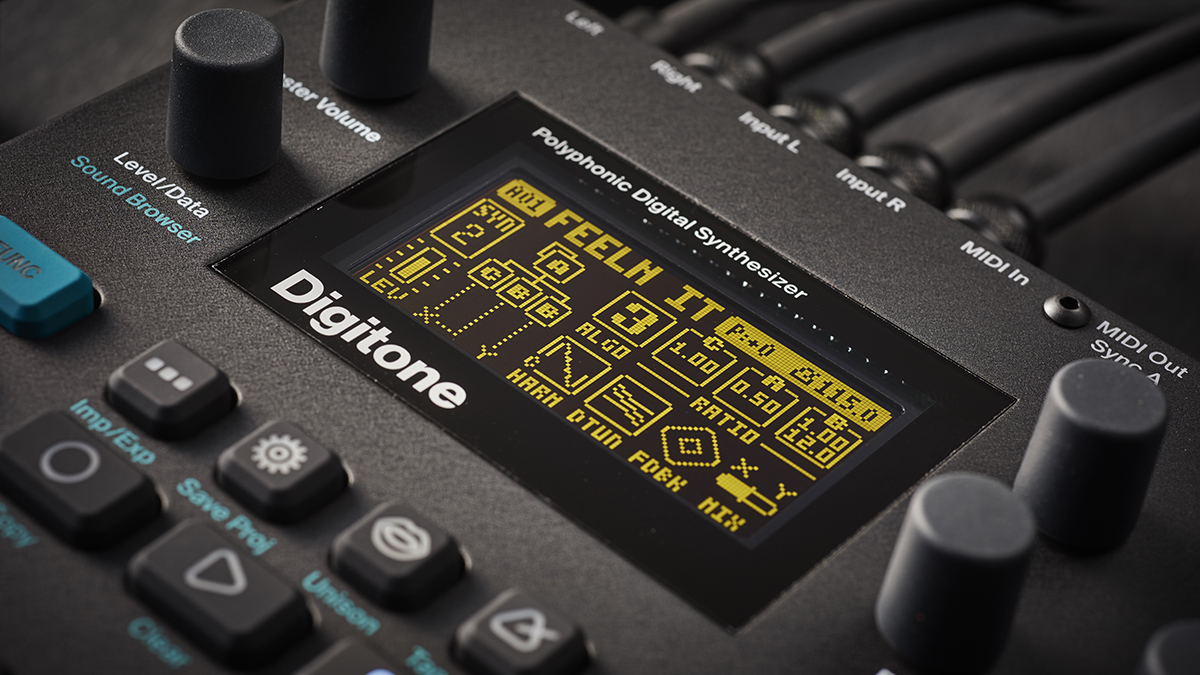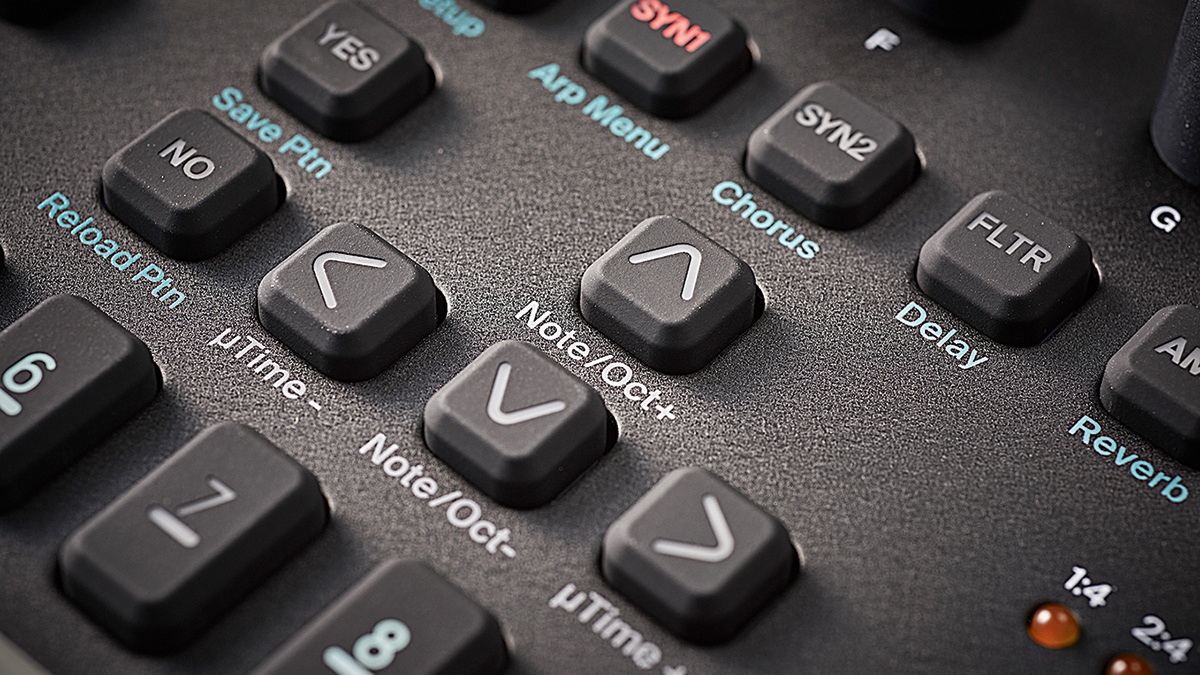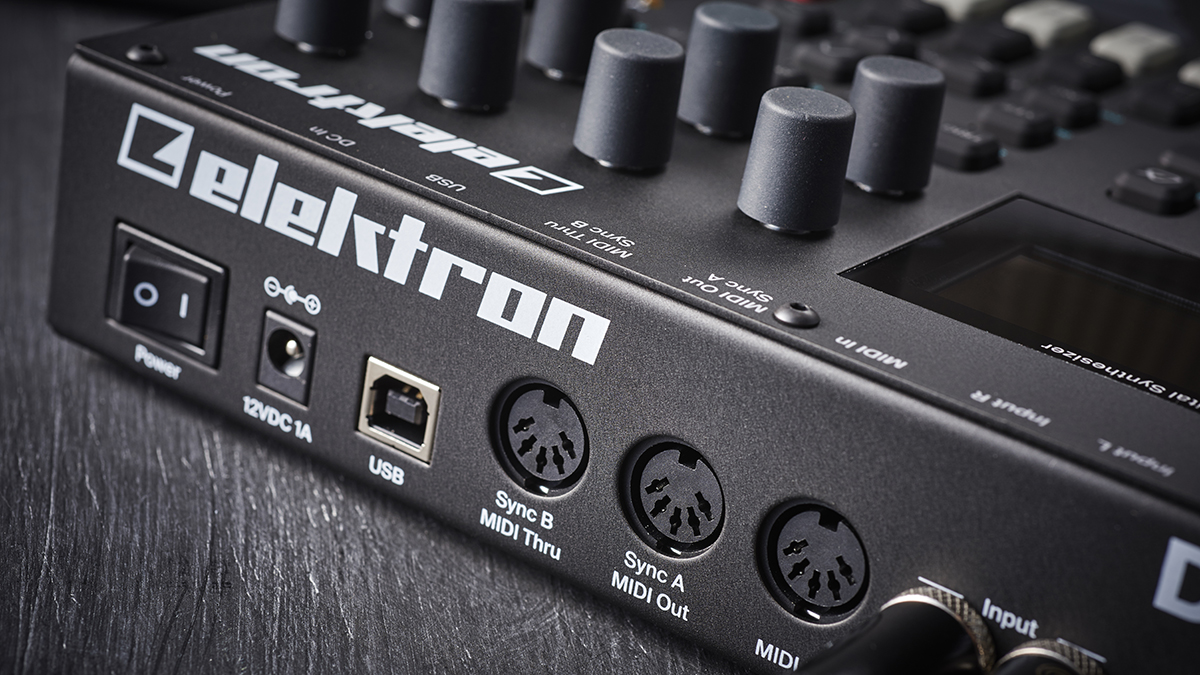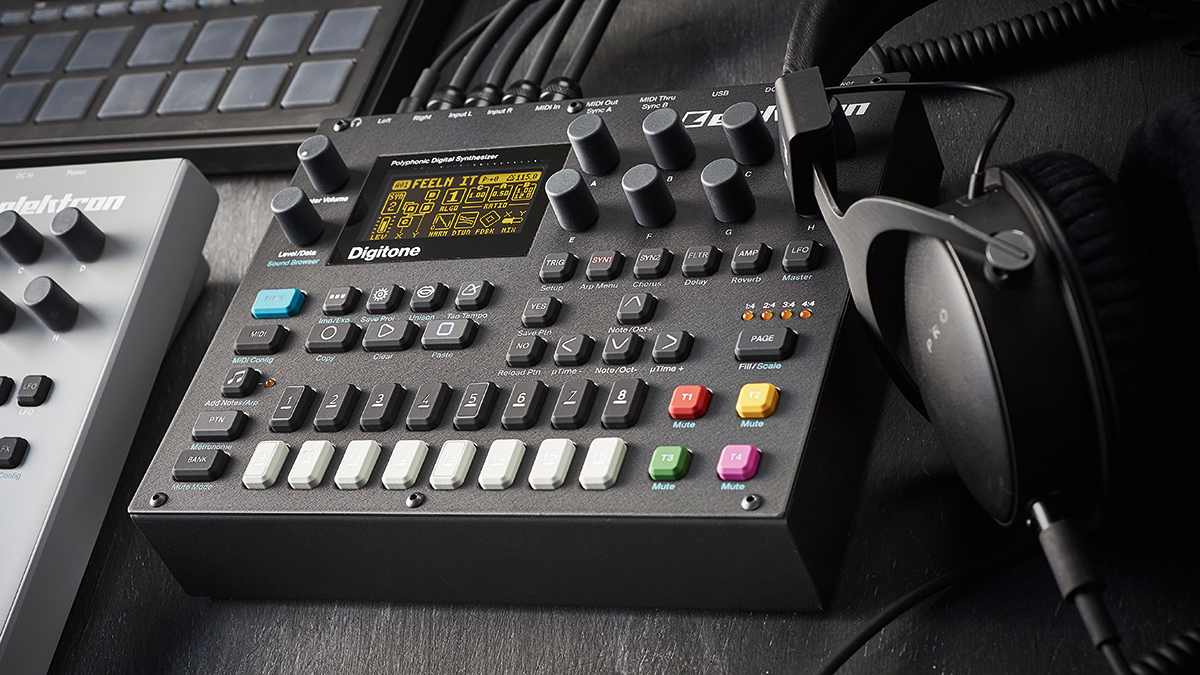MusicRadar Verdict
A fun and very well thought-out box that can cover a wide sonic palette; takes the pain out of FM and replaces it with joy!
Pros
- +
Well built, portable. Seamless integration between sequencer and sound engine.
- +
Can also be a great FM MIDI module or a powerful external MIDI sequencer.
- +
Clear yet fat sound quality. Can process other external gear via inputs.
Cons
- -
Elektron sequencer and file system are tricky (if new to it).
- -
No individual outs on hardware, no pattern chain saving on power down.
MusicRadar's got your back
FM is deservedly starting to gain traction again in the synth world following the release of Yamaha’s Reface DX in 2015, the flagship Montage in 2016 (with Yamaha’s latest FM implementation FMX) and more recently, Korg’s Volca FM groovebox (also 2016).
At the upper price point (alongside the Montage) there’s also the DSI Prophet 12 which now features four-op linear FM paired with its ‘character’ effects and analogue filters. However, while we have those high- and low-end options, and numerous great secondhand FM synths, we’ve not seen a mid-priced, truly hands-on FM groovebox since Yamaha’s DX200, which launched in 2001 and now commands silly prices second-hand. That is until now, with the launch of the Digitone; an FM-based desktop synth which comes pair with Elektron’s powerful, much-lauded sequencer.
The Digitone will look familiar if you’re au fait with last year’s splendid Digitakt sampling groovebox. The size and shape of the two instruments is near-enough identical, and many of Digitakt’s best features are carried across here, including the external MIDI sequencer, the great parameter lock automation system (P-locks), the fill and variation modes, and the excellent probability-based system of ‘conditional’ sequencer triggers. As before, the hardware build quality feels tank-like solid; essential, as you’ll be giving the buttons and encoders a full workout!

Let’s talk more about the effects! Firstly, the Digitone has a handy stereo input so you can route any external audio through the delay, reverb, chorus and overdrive effects (although it’s worth noting that the inputs are summed to mono before the effects). This makes the Digitone a very handy processor for older synths and drum machines that don’t normally have their own built-in effect. Importantly, like the Digitakt and other Elektron boxes, the quality of these effects is high throughout. The chorus is wide and lush, the reverb deep and atmospheric – perfect for moody soundscapes – and the same goes for the delay too. There are plenty of tweakable parameters to help tailor the effects for any musical style. You can adjust the frequency response, pre delay, decay and gain on the reverb. The chorus, meanwhile, has speed, width and HPF controls. The delay, has controls for the HPF/LPF, feedback, width and ping-pong mode. Also, there’s a master overdrive that, despite being digital, sounds superb and is great for adding grit to either the native FM engine or incoming audio. You can P-lock and sequence the effects parameters too.
So what’s at the heart of this machine? Well, it’s good old familiar four-operator FM (where waves modulate each other) but with some very welcome new twists and turns. The native FM engine is eight-note polyphonic and has four dedicated tracks (accessed directly via the sweet shop style T1-T4 buttons), along with four MIDI tracks for controlling/sequencing external MIDI gear (much like the Digitakt). What’s clever here is that you have a user-configurable voice allocation menu (accessed via the Unison button), with several voice allocation, stealing and layer modes, so that you can distribute the eight voices as you wish between the tracks. With this feature, you can ensure any sound that needs to retain its full polyphony, or long sustain/release, will always play as intended and have its voices reserved. You can control where any tracks will steal additional polyphony from too. You can also set layering so that multiple sounds can trigger simultaneously from one key. I love that Elektron have also included up to eight-note unison with unison-spread for huge multi-dimensional stereo sounds. A whole bag of great sounds and patterns are featured onboard too. In fact, on startup, I spent a while just exploring the brilliant, wide-ranging presets and seeing how they were built on screen. This revealed much about the genius of this machine, how versatile it is sonically and how hands-on Elektron have made their implementation of FM. FM has a bad rep for being complex, but the Digitone feels just as accessible as any other hands-on synth. To quote FM Synthesis inventor, John Chowning, ‘It lets the user intuitively explore this re-formable, shapeable ball of stuff, then put that through the normal processes of synthesis’.

As with the Digitakt, Elektron have split the sound engine up into easily digestible menus that use clear, responsive graphics. The six buttons under the encoders navigate to the main sound design areas. Using the turquoise function button gives these buttons secondary access to the effects and setup menus too. It’s easy enough to navigate despite the many parameters on offer. The first button, TRIG, deals with sequencer functions and this is where you set the length of your trigs (events) along with trig conditions (probability-controlled events). The secondary ‘function’ menu lets you set key scaling, filter tracking and allocate which four parameters are mapped to an external controller’s mod and pitch wheels.
Next there are three pages of synth engine controls where you really get stuck into the most important sound shaping. The SYN1 button takes you to the main synth page. Here you have level control for the selected synth track along with an algorithm selector which allows you to connect the operators (oscillators) in different ways, with sonic results ranging from subtle to radically different. There are clear visual representations of the operator arrangements, which make experimenting with algorithms surprisingly easy to grasp. You’ll also find options here to tweak the ratio (ie, frequency) of each operator, along with the harmonic content, detuning and feedback. There’s also an indispensable XY control which allows you to blend between the X and Y carrier outputs which follow the operators. This great feature enables mixing between two separate timbres (this can be modulated and parameter-locked in the sequencer too). All considered, this is a very versatile and surprisingly powerful setup. You can easily get lost in FM heaven here, even before you’ve moved to the next SYN2 button. This next menu allows tweaking of the two available modulation envelopes for operators A and B. You can also set up how the envelopes are triggered, including envelope delay and trigger reset. Again, you can experiment here without getting lost in technicalities; simply move to a page, turn the encoders and listen – it’s easy!
Moving on, the next menu deals with a basic filter (a global 1-pole 6db filter) plus a more involved three-mode filter (two different low-pass modes, plus a high pass) and a four-stage ADSR filter envelope. Again, there’s plenty of scope for sound-shaping and the resonant filter sounds excellent – very analogue-like, liquidy and warm, with a lovely sheen on the high-end and plenty of low-end grunt. The next menu accesses the amp envelope (ADSR again) along with settings for the digital drive, panning and volume. The envelopes throughout are nicely punchy and detailed, demonstrated particularly well by the shorter preset sounds onboard, along with the surprisingly good FM drum sound presets, which provide great starting points for further FM drum exploration. Also, if you double tap this button you can access chorus, delay, reverb and amp envelope reset parameters.

The final button accesses the LFOs (two per-voice) which go super fast and each have numerous easily assignable destinations along with various wave shapes, plus speed and depth controls. The second page here also gives you control over LFO start phase, fade, clock divisions (MIDI syncable) and trigger modes. Plenty to work with then!
Once the Digitone’s FM sound engine is coupled to the Elektron’s fantastic sequencer design, the whole thing just comes alive. You’ll soon be wondering why anyone thought FM was difficult to use or old-fashioned sounding! Of course, you can use the Digitone as a simple sound module triggered from a MIDI controller, DAW or the onboard 16-step buttons to play simple old-skool FM impersonations, but it’s once the sequencer, modulators and filters are employed (and the excellent effects overlayed or ‘P-locked') that the Digitone shows its colours. You can make whole songs once you employ pattern chaining, and using the trig conditions to evolve initially simple one-bar beats into continually morphing loops is hugely fun. There’s an arp for each synth track too, further enhancing the creative possibilities. Once you realise you can parameter-locking different sounds to each sequencer step the possibilities can seem endless.
The Digitone is the most exciting FM machine I’ve laid hands on for a long time. It’s a bonus too that it’s super portable. Saying that, I’d love a five-octave keyboard version, DX-style with loads of knobs! Still, what you’re getting here is a super-deep FM engine plus the full Elektron sequencer. Between trig conditions, fill mode, easy muting of the four internal tracks, the Control All mode (for making broad global sound edits), quality effects, multi-track external MIDI sequencing and a powerful per-track arp, the Digitone really does offer a hell of lot of performance capabilities. In short, I’m super-impressed by the Digitone!










